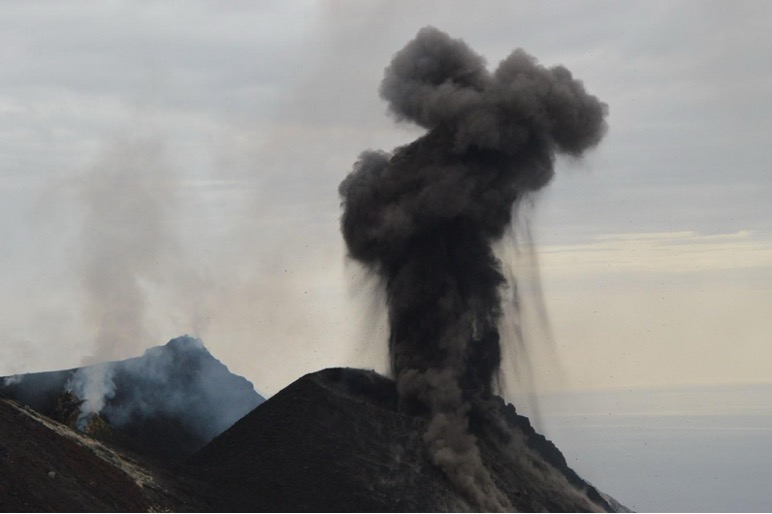
During Strombolian eruptions a mix of ash particles and gas is emitted within the "plume", expanding above the eruptive vent (see Figure). Some gases (such as sulphur, chlorine and fluorine) concur with the formation of soluble salts adhering on ash’s surface, these last serving as condensation nuclei, removing part of the gases from the plume. The content of these gases within the plume is an important geochemical parameter that is monitored to understand eruptive dynamics.
It is precisely these soluble salts formed on the ash particles that are studied in the so-called "leachate analyses". Let's see how it works. Leachates are obtained by reacting volcanic ash with deionized water. Being soluble, the salts that formed in the plume pass into solution, and the chemical analysis of the solution can provide very useful information on the content of different gases inside the plume.
In order to optimise this analysis, an apparatus was assembled as part of the UNO departmental project to facilitate the extraction of leached solutions from the ashes. This apparatus consists of a centrifuge and a mechanical shaking stirrer. Thanks also to the use of the new automatic ash sampler developed by INGV colleagues and the collaboration of volunteers present on the island, in the last year of the project it was possible to continuously sample the ash dispersed during volcanic activity over the course of a large time interval. In this way, the chemical analyses of the leachates could allow us to correlate variations in the chemical composition of the plume with the eruptive state of the volcano. For example, from November 2022 to October 2023, about 50 samples of fresh ash were collected, representing different types of activity at the Stromboli volcano, from ordinary explosions to major ones, to lava flows and pyroclastic flows generated by the collapse of the lava fronts. We are eager to see what the leachates will tell us!

